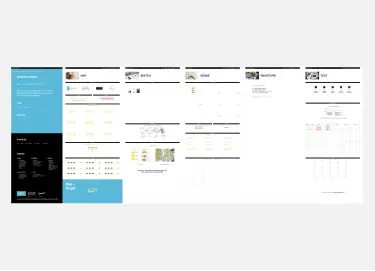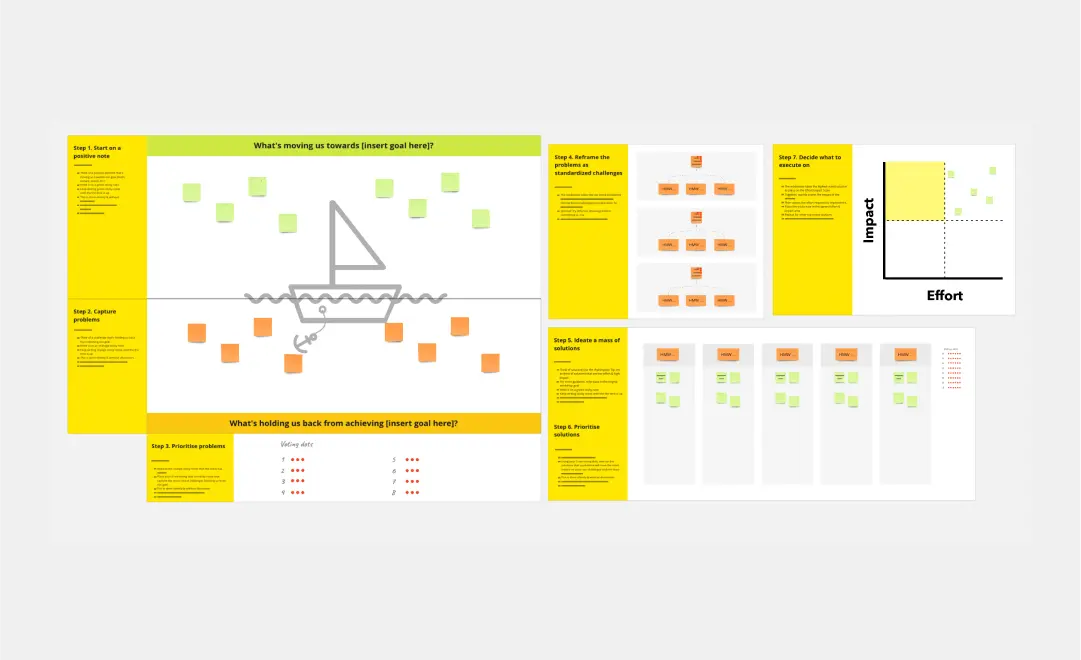About the Remote Design Sprint template
Design sprints were developed by Google to enable teams to align on a specific problem, generate multiple solutions, create and test prototypes, and get feedback from users in a short period of time. Design sprints help companies innovate more quickly.
Created by JustMad, a business-driven design consultancy, this template has been used to successfully run design sprints with numerous distributed teams worldwide, across multiple industries.
How do you run a design sprint with a remote team?
The Remote Design Sprint takes place across four days, with four phases:
Map and sketch
Decide and storyboard
Prototype
Test and learn.
You can use this template to work with the full group during the first two days.
Miro's Voting and Timer features are particularly useful when running a Design Sprint with a distributed team. For a walk-through of how to use this template, check out our recording of their interactive workshop, How JustMad Uses Miro to Run Remote Design Sprints.
Why should you run a Design Sprint?
Running a design sprint can help teams move faster, overcoming roadblocks and aligning more quickly. They're good for generating multiple ideas from a diverse group to solve a complex problem – resulting in more innovative solutions than if everyone had operated independently.
Getting early feedback from users can help you identify potential flaws earlier, and in a more cost-efficient manner. After a sprint, you should have a workable prototype that you can use to start developing your product.
Although they're commonly used in product development, design sprints are flexible and can be adapted to multiple projects and focus areas, from marketing to HR.






